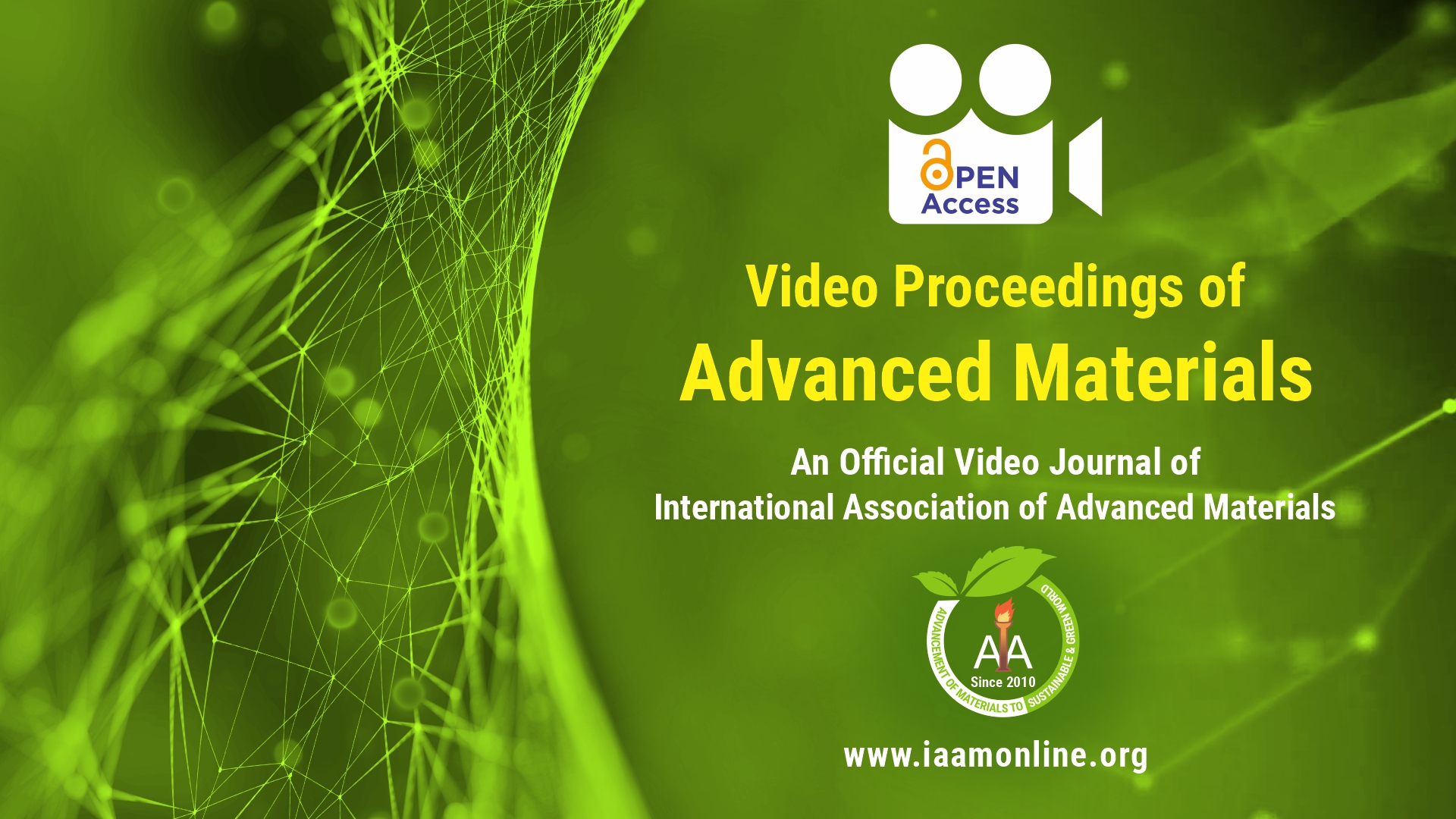Video Article Open Access
Structural and Chemical Analysis of Filled Nanotubes
Francis Leonard Deepak
Nanostructured Materials Group, International Iberian Nanotechnology Laboratory, Avenida Mestre Jose Veiga, Braga 4715-330, Portugal
Vid. Proc. Adv. Mater., Volume 2, Article ID 2110238 (2021)
DOI: 10.5185/vpoam.2021.10238
Publication Date (Web): 22 Jul 2022
Copyright © IAAM
Graphical Abstract

Abstract
The hollow interiors of nanotubes could host the growth or filling of foreign elements/compounds to obtain hetero-structures. The growth of these materials in the confined one dimensional space lead to novel properties. There are different routes to obtain the filling of nanotubes. Among these capillary filling serves as a suitable method to enable filling of carbon nanotubes (CNTs) and inorganic nanotubes including those of BN and WS2 [1,2]. In this talk the synthesis, structure and novel properties/applications of such 1D vdW heteronanostructures will be discussed. Various suitable examples will be highlighted. These include our recent work on the filling of Gd and Bi-based compounds within CNTs and WS2 Nanotubes which enable the formation of Single-Walled Nanotubes of GdI3 and BiI3 [3,4]. The formation of Inorganic Single-Walled Nanotubes is especially interesting since it enables the exploration of new materials which are at the interface of 1D and 2D [5]. In such complex heterostructures, the precise determination of the structure and composition is detrimental in its further application. Thus the investigation of the structure, morphology and chemical composition of filled nanotubes investigated using aberration corrected scanning/transmission electron microscopy and associated spectroscopic techniques (EELS and EDS) will be outlined. The three dimensional structure of such systems can be elucidated using electron tomography [6]. The experimental observations in these systems are adequately supported by carrying out theoretical calculations in order to elucidate and understand the difference in behavior of the various compounds towards their affinity to fill the interior of the Nanotubes [7,8].
Keywords
One-dimensional; nanotubes; vdW heterostructures, inorganic single-walled nanotubes, advanced electron microscopic techniques.
Acknowledgement
The author acknowledges the project “Correlated Analysis of Inorganic Solar Cells in and outside an Electron Microscope (CASOLEM)” project (PTDC/NAN-MAT/28917/2017), co-funded by FCT and ERDF through COMPETE2020.
References
- Ronen Kreizman, Andrey N. Enyashin, Francis Leonard Deepak, Ana Albu-Yaron, Ronit Popovitz-Biro, Gotthard Seifert, and Reshef Tenne, Adv. Funct. Mater., 2010, 20, 2459.
- F. L. Deepak, A. Mayoral, R. E. and Arenal (Eds.), Advanced Transmission Electron Microscopy: Applications to Nanomaterials, Springer (2015).
- E. A. Anumol, Andrey Enyashin and Francis Leonard Deepak, Single Walled BiI3 Nanotubes Encapsulated within Carbon Nanotubes, Scientific Reports 2018, 8, 10133.
- Nitin M. Batra, E. A. Anumol, J. Smajic, Andrey Enyashin, Francis Leonard Deepak and Pedro M. F. J. Costa, J. Phys. Chem C, 2018, 122, 24967.
- Laura Cabana, Belén Ballesteros, Eudar Batista, César Magén, Raúl Arenal, Judith Oró-Solé, Riccardo Rurali, and Gerard Tobias, Adv. Mater. 2014, 26, 2016.
- E. A. Anumol, Andrey Enyashin, Nitin M. Batra, Pedro M. F. J. Costa and Francis Leonard Deepak, Nanoscale, 2016, 8, 12170.
- Francis Leonard Deepak and A. N. Enyashin, Isr. J. Chem, Special Issue: Computational Science of Inorganic Nanostructures, 2017, 57, 501.
- E. A. Anumol, F. L. Deepak, A. N. Enyashin, Capillary filling of carbon nanotubes by BiCl3: TEM and MD insight, Nanosystems: Physics, Chemistry, Mathematics, 2018, 9 (4), P. 1-11.
Video Proceedings of Advanced Materials

Upcoming Congress



